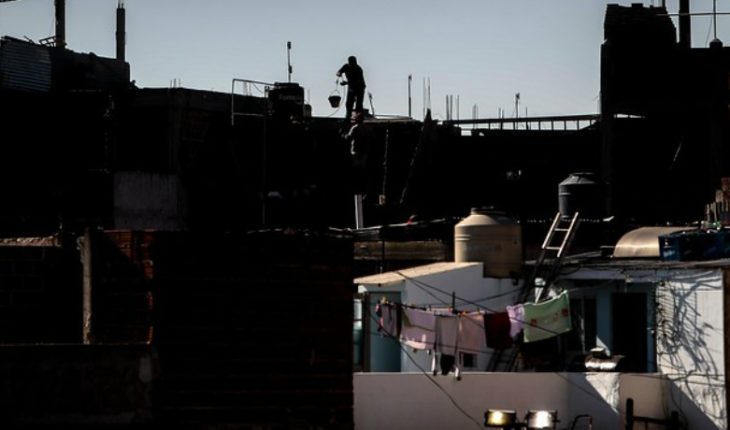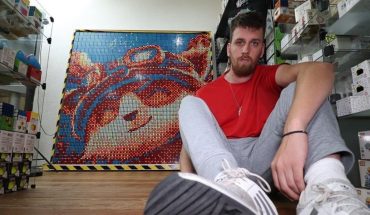The Argentine government on Monday isolated an impoverished slum on the outskirts of Buenos Aires, while stepping up actions to detect people with the new coronavirus in the face of a sharp increase in contagion in recent days mainly in areas of the country’s capital. The operatives focused on the slum of Villa Azul, which is distributed in the municipalities of Quilmes and Avellaneda, and which was completely isolated with fences. There, according to the authorities, more than 50 people with symptoms of the virus have been detected so far, while a similar figure is under study, which made the humble slum the first focus of contagion in the buenos Aires urban belt.People residing in Villa Azul agreed with the isolation measure after reporting that locals gathered during quarantine to play football for hours in a small court of the neighborhood. An emergency committee composed of health and safety authorities carried out full check of entrances and exits and two logistics centres are responsible for the distribution of food and hygiene items. Community Development Minister Andrés Larroque told the media that “all circulation was shut down and a device was put together to get everything they need; we’re going to hand out the food in the houses.” Argentina was currently registering 11,620 contagions and 456 deaths. A total of 5,500 cases were detected in the city of Buenos Aires and 4,060 in the province of buenos Aires, where the poplums of the vicinity of the capital are the most affected. In turn, the city of Buenos Aires is preparing to return from Tuesday to a more restrictive quarantine after the authorities decided to close shops that had been allowed to open their doors days ago, although the driving licence for essential workers is maintained and public transport will be limited to contain cases that have quintupled in the last two weeks. In Bolivia, meanwhile, some cities were flexing from Monday the quarantine that extends until the end of the month, in the face of pressure from the informal sector that represents more than 60% of the economy in the Andean nation and although the pandemic is booming with 6,013 infected and 250 decesos. During the day, more people were seen on the streets, as in the city El Alto, neighbor of La Paz.The Bolivian authorities warned that the greatest peak of cases could occur at the end of June and led their efforts to deal with the crisis in Beni, which together with Santa Cruz, are the provinces of the East of the country where 80% of the contagions are concentrated. In Beni, the health system’s precariousness sparked contagion, and Gov. Fanor Amapo launched desperate calls for help. According to local media, more than 80 doctors contracted the virus forcing the ban on recruiting Galenos from other cities to serve Trinidad, the capital of Beni.In Chile, the country’s hospital system, with 2,400 critical-use beds, was still on limit by the relentless increase in new infected people, which on the last day grazed the 5,000, while only having 332 fans , the smallest amount since March. To address Chile’s complicated situation, with 73,997 infected and 761 killed, the undersecretary of health, Arturo Zúñiga, reported that a greater conversion of cots into heavy-duty beds will be sought, adding another 400. He also announced the arrival on Monday and Tuesday of more fans, although he did not give details of how many, or where they come from. To complicate matters further, 2,400 health officials are infected and quarantined, he added. Some 8,000 were hired to reinforce teams working shifts of up to 24 hours.” It is a situation of saturation of our services”, said Cristóbal Cuadrado, technical secretary of the Medical College, which estimated 97% the use of critical beds in the great Santiago, which concentrates more than 80% of the infected in the country. In addition, he warned that “we are beginning to fill the ICU (Intensive Care Unit) of surrounding regions. Nearly 800 critical patients connected to mechanical ventilation were taken to regional hospitals. Colombia, with 21,175 cases and 727 deaths, was also preparing to enter a new phase of flexibilization of activities from 1 June and involving the reopening of shopping centers, albeit at 30% of their capacity. In the north of the continent, Mexican President Andrés Manuel López Obrador said that this week he will announce measures to return to the “new normal” in the country, which includes the return to classes and sports activities in some regions. Mobility reduction measures restricting economic activities to only those essential to mitigate the spread of the coronavirus will end on 31 May and from 1 June the country will operate with a four-color traffic light system that will determine what type of activities are allowed according to the number of contagions in each state. Mexico is at the height of the epidemic with 68,620 contagions and 7,394 deaths. Latin America reported nearly 543,000 contagions and more than 33,300 deaths, and Brazil has the highest number of infections and deaths. Globally, more than 5.4 million people have been infected and more than 345,000 have died, according to the Johns Hopkins University Center for Systems and Science, which bases its data on reports from governments and health authorities in each country. In most people this virus causes mild or moderate symptoms that go away in two to three weeks. But in some people, especially older adults and those with underlying health disorders, it can cause more serious illnesses and even death.
translated from Spanish: Argentina isolated impoverished neighborhood in the face of massive Covid-19 contagions
May 25, 2020 |





